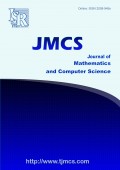Hydrodynamic Modeling of Fluid Body Interaction by Fully Non-linear Numerical Towing Tank
-
1963
Downloads
-
2810
Views
Authors
Arash Abbasnia
- Marine Technology Faculty of Amir Kabir University of Technology
Mahmoud Ghiasi
- Marine Technology Faculty of Amir Kabir University of Technology
Seyed Mohammad Hossein Sharifi
- Nautical Science Faculty of Petroleum University of Technology
Abstract
In basic design of offshore or onshore structures, prediction of surface waves due to uniform motion of the floating body is essential to achieve an optimum body shape. Whereas, in the practical hydrodynamics, using of towing tanks is common and so cost and time consuming to conduct it, so a reliable numerical tank is interesting. A wide channel with constant depth constitutescomputational domain. It assumes that fluid is incompressible and non-viscous and the flow is irrotational. Therefore, Laplace’s equation could describe flow field.3D Boundary Element method based on second Green’s Identityis implemented to solveLaplace’s equation. Impermeable boundary condition is satisfied by Image method and Cauchy integral theorem and Poisson summation formula is used to determine Principle value integral. In this study, numerical simulation is conducted for a hemisphere and added mass and generated wave profile is presented.
Share and Cite
ISRP Style
Arash Abbasnia, Mahmoud Ghiasi, Seyed Mohammad Hossein Sharifi, Hydrodynamic Modeling of Fluid Body Interaction by Fully Non-linear Numerical Towing Tank, Journal of Mathematics and Computer Science, 4 (2012), no. 3, 456--462
AMA Style
Abbasnia Arash, Ghiasi Mahmoud, Sharifi Seyed Mohammad Hossein, Hydrodynamic Modeling of Fluid Body Interaction by Fully Non-linear Numerical Towing Tank. J Math Comput SCI-JM. (2012); 4(3): 456--462
Chicago/Turabian Style
Abbasnia, Arash, Ghiasi, Mahmoud, Sharifi, Seyed Mohammad Hossein. "Hydrodynamic Modeling of Fluid Body Interaction by Fully Non-linear Numerical Towing Tank." Journal of Mathematics and Computer Science, 4, no. 3 (2012): 456--462
Keywords
- preinvex function
- source
- Green integral
- Perturbation potential.
MSC
References
-
[1]
C. A. Brebbia, The boundary element method for Engineers, Pentech Press, London (1978)
-
[2]
O. M. Faltinsen, Hydrodynamics of high-speed marine vehicles, Cambridge University Press, Cambridge (2005)
-
[3]
J. N. Newman, Marine Hydrodynamics, M.I.T. Press, Cambridge (1989)
-
[4]
J. V. Wehausen, E. V. Laitone, Surface Waves, Springer, Berlin (2002)
-
[5]
M. Insel, L. J. Doctors, Wave-pattern prediction of monohulls and catamarans in a shallow water canal by linearized theory, Proceeding of 12th Australian Fluid Mechanics Conference, 1995 (1995), 259--262
-
[6]
Z. L. Gao, Z. J. Zou, A three-dimensional desingularized high-order panel method based on NURBS, Journal of Hydrodynamics, 20 (2008), 137--146
-
[7]
S. T. Grilli, P. Guyenne, F. Dias, A fully non-linear model for three-dimensional overturning waves over an arbitrary bottom, International Journal for Numerical Methods in Fluids, 35 (2001), 829--867
-
[8]
W. S. Hwang, Boundary spectral methods for non-lifting potential flows, International Journal for Numerical methods in Engineering, 41 (1998), 1077--1085
-
[9]
J. S. Kouh, C. H. Ho, A high order panel method based on source distribution and gaussian quadrature, Journal of Ship technology, 43 (1996), 38--47
-
[10]
I. Sahin, M. Hyman, Numerical calculation for the flow of submerged bodies under a free surface, Journal of Ocean Engineering, 20 (1993), 339--347
-
[11]
I. Sahin, M. Hyman, T. C. Nguyen, Three dimensional flow around a submerged body in finite-depth water, Journal of Applied Mathematical Modeling, 18 (1994), 611--619
-
[12]
Y. Cao, Computations of nonlinear gravity waves by a desingularized boundary integral method, Technical Report (The University of Michigan), Michigan (1991)

